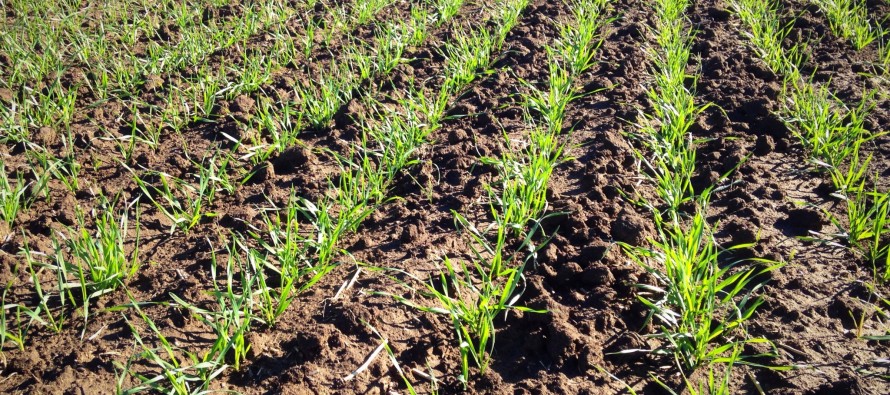Vital Topics to Consider for 2015 Wheat Planting

Related Articles
- 2010 Soybean And Corn Variety Trial Data 3
- Flag The Technology 0
- Spring Nitrogen Fertility Suggestions for Wheat 0
Latest Tweets
Dry weather has generally delayed wheat planting this year until recent rains replenished soil moisture. Therefore, wheat management is now a priority as fields dry to allow seeding. This article will address several vital management practices to employ to optimize wheat productivity.
- Is it too late to plant wheat? Wheat can be planted anywhere in Mississippi through the month of November and into mid-December in South Mississippi with little or no issues. Our winters are quite mild, compared to northern climates, allowing some wheat tiller development, which is the primary shortcoming associated with late planting. However, you do need to expose the wheat to enough cold temperatures to satisfy vernalization requirements. Of course, employing all the following best management practices will address other issues which may be intensified by late planting.
- Field selection is important: The wheat growing season occurs during the wettest months of the year, so adequate drainage is critical to high productivity. Moderate surface drainage or grade is particularly important on heavy clay soils, which have inherently poor internal drainage. Good drainage is especially critical for late plantings, since the fall growing season is condensed more than normal.
- Address fertility issues: Most fertility issues, with the exception of nitrogen and sulfur, should generally be addressed before planting, if possible. Wheat is a shallow-rooted crop, so it is very vulnerable if any nutrient shortcomings exist. Furthermore, if you plan to double-crop behind the wheat, it is best to address both crops’ needs prior to planting wheat.
- Start clean at planting: Given our dry fall, there will most likely be an abundant flush of weeds germinating from recent rains. It is absolutely essential to kill weeds before planting wheat by applying a burndown herbicide or using tillage. Tillage may also be the most practical option to control volunteer Roundup Ready corn prior to planting wheat. Maintaining a weed-free environment during planting and stand establishment is essential because weeds are very competitive with young wheat plants, particularly if they emerge before or at the same time as the wheat crop.
- Use an appropriate seeding rate: Wheat is not generally very responsive to seeding rate, but late planting does increase the importance of achieving a vigorous, healthy, full stand. Our normal planting recommendation is to strive to establish 1.0 to 1.3 million wheat plants/acre or 23 to 30 plants/ft.2 The following table lists appropriate seeding rates for planting wheat with a drill. Higher seeding rates are required for broadcast seeding methods, dependent upon the anticipated emergence success of the specific method.

- Realize the benefits of fall-applied residual herbicides: Everyone understands the importance of weed control during early development for our primary crops, but relatively few employ that concept for wheat. It is important because there is such a long duration in wheat for weed competition to occur, and competition may more damaging for late plantings. Use of residual herbicides and different modes of action also help stifle development of weed resistance, some which are developing in wheat. Furthermore, addressing substantial weed populations in the fall, may allow more latitude with spring herbicide timing, which can be very important in areas of the state where aerial application is not available. Several established herbicides such as metribuzin, Finesse, and Axiom, as well as the newly labeled Zidua can serve valuable roles addressing specific weed issues in wheat. For more assistance, feel free to contact myself or any of our MSU Extension Service Crops Team.
Write a comment
No Comments
View comments




Let me tell You a sad story ! There are no comments yet, but You can be first one to comment this article.
Write a comment